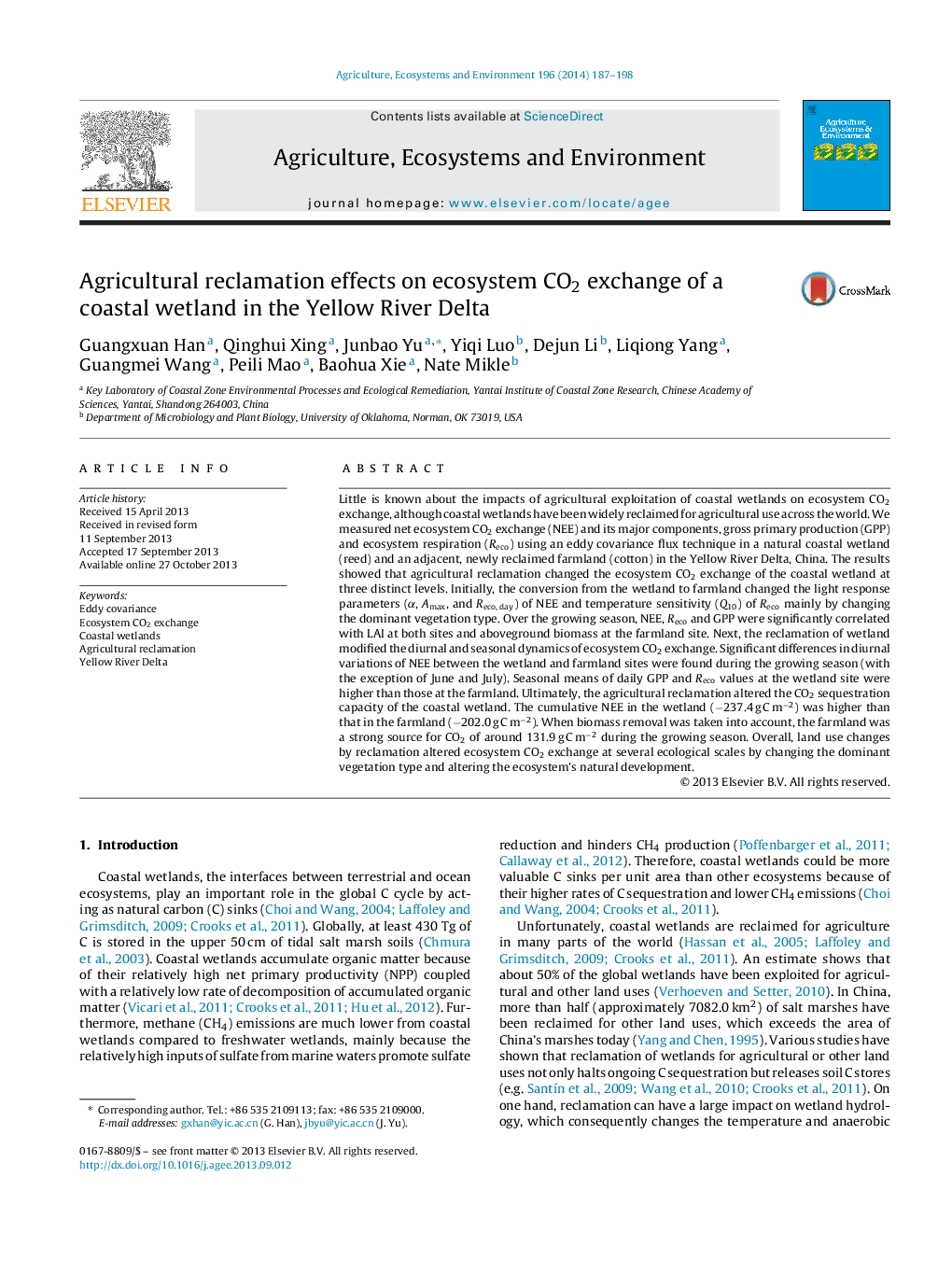| Article ID | Journal | Published Year | Pages | File Type |
|---|---|---|---|---|
| 2414009 | Agriculture, Ecosystems & Environment | 2014 | 12 Pages |
•Agricultural reclamation changed NEE of a coastal wetland at three distinct levels.•Agricultural reclamation changed the response of NEE to light and temperature.•Agricultural reclamation changed diurnal and seasonal variations of NEE.•Agricultural reclamation altered the CO2 sequestration capacity of a coastal wetland.
Little is known about the impacts of agricultural exploitation of coastal wetlands on ecosystem CO2 exchange, although coastal wetlands have been widely reclaimed for agricultural use across the world. We measured net ecosystem CO2 exchange (NEE) and its major components, gross primary production (GPP) and ecosystem respiration (Reco) using an eddy covariance flux technique in a natural coastal wetland (reed) and an adjacent, newly reclaimed farmland (cotton) in the Yellow River Delta, China. The results showed that agricultural reclamation changed the ecosystem CO2 exchange of the coastal wetland at three distinct levels. Initially, the conversion from the wetland to farmland changed the light response parameters (α, Amax, and Reco, day) of NEE and temperature sensitivity (Q10) of Reco mainly by changing the dominant vegetation type. Over the growing season, NEE, Reco and GPP were significantly correlated with LAI at both sites and aboveground biomass at the farmland site. Next, the reclamation of wetland modified the diurnal and seasonal dynamics of ecosystem CO2 exchange. Significant differences in diurnal variations of NEE between the wetland and farmland sites were found during the growing season (with the exception of June and July). Seasonal means of daily GPP and Reco values at the wetland site were higher than those at the farmland. Ultimately, the agricultural reclamation altered the CO2 sequestration capacity of the coastal wetland. The cumulative NEE in the wetland (−237.4 g C m−2) was higher than that in the farmland (−202.0 g C m−2). When biomass removal was taken into account, the farmland was a strong source for CO2 of around 131.9 g C m−2 during the growing season. Overall, land use changes by reclamation altered ecosystem CO2 exchange at several ecological scales by changing the dominant vegetation type and altering the ecosystem's natural development.
